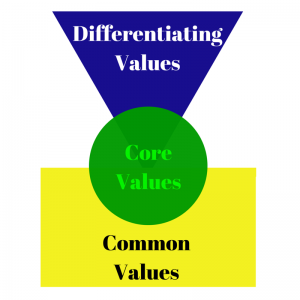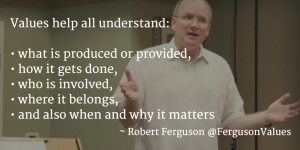Changing the game through innovation
 Lots of people call themselves marketers. In fact, I find more people claim to be experts in marketing than just about any other field.
Lots of people call themselves marketers. In fact, I find more people claim to be experts in marketing than just about any other field.
More often than not, when a person says “I’m in marketing” what they really mean is “I sell stuff” or “I help other people sell stuff.” If you’re hunting for customers to buy something, or waiting for customers to make an order, you’re selling.
If you’re preparing for the next trade show, writing ad copy, buying media, identifying better ways to find your website, or designing sales brochures, then you’re involved in promotional activities. And if you’re helping customers feel good about their purchase, or resolve complaints to try and keep customers happy, then you’re in customer service.
But, if you’re setting pricing, identifying potential channels, or tweaking the product lineup AND the person responsible to deliver a specific revenue and profit target – then maybe you’re actually in marketing.
Not surprisingly, the number of people involved in these activities is very small. It’s like comparing the number of actuaries – the people who use statistics to calculate insurance risk and premiums – to the number of insurance sales people. The ratio might be 500:1
And then there’s the area of product development. Ironically, I find many people involved in “Research & Development” do not associate themselves as being in marketing. They tend to feel more comfortable being called a scientist or engineer. The field of marketing doesn’t have a good reputation….
All of the roles described above are essential to a business that sells goods and services. They help maintain the status quo, or possibly incremental growth – providing there is no disruptive change in the marketplace. And that is unrealistic.
So how does a company create an engine of sustainable growth – to change the game?
Innovation is the game-changer
I was reading a book called The Game Changer, co-authored by A.G. Lafley (former Chairman & CEO of Procter & Gamble) and Ram Charan (coauthor of the book Execution). The book is all about innovation.
Lafley used innovation to drive significant revenue and profit growth at P&G during his ten years as CEO. How? By using it as the central organizing principle that every person at P&G used to make decisions, address challenges, and create new opportunities. In other words, innovation became the differentiating value.
As a value, Innovation means introducing something new; invention; advanced or ahead of the times.
Lafley fully embraced this value and carefully wove it into the fabric of P&G, doubling sales during his tenure as CEO and increasing the company’s portfolio of billion-dollar brands from 10 to 24. And Charan studied this. Together they have written about it.
Where to start with the value of innovation?
Three key ideas that Lafley and Charan suggest are:
- leverage what you already do really well (focus on your strengths)
- integrate innovation into existing routines (vs. starting new ones)
- begin creating a more courageous, more connected, and more collaborative culture.
It’s this last part that is the most critical. For those who want to embrace innovation as a differentiating value, there is much more offered by these co-authors.
Signs of Innovation Success
How do you know if you are on the road to success? Lafley offers a few of the signs he’s discovered:
- Even with lots of good ideas, you will continue to see many unmet consumer needs and competitors beating you to market.
- While experiencing success, you will still see nearly half of your innovations fail to deliver against business goals.
- Even with a disciplined innovation process, the human lack of self-discipline will remain. And it will cost you.
- Most innovation will be product innovation. It is rarer to see in business models or disruptive innovations that dramatically change the consumer value equation.
- While participation and responsibility for innovation grows, you will always have issues with coordination and integration across business and functional disciplines.
- Developing innovation leadership requires time and patience, and learning from a lot of experience.
So if you choose to embrace the value of innovation, know that it’s all about the journey and not the destination. And it’s a value to be embraced by everyone at the company, not just a select few.
This is the time to maximize the belief that everyone IS in marketing. Because they are!
What other companies have leveraged the value of innovation to change the game?







